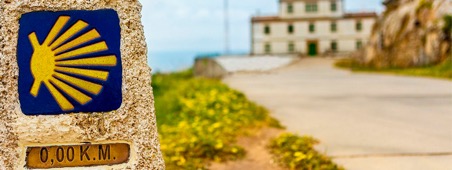
One of the highest expressions of Catholic faith in the world is the Camino de Santiago. It is a series of pilgrimages through routes located mostly to the north of Spain, although some of them even start from the south of France, Seville and from Lisbon (Portugal).
All these routes end in the Cathedral of Santiago de Compostela, place of rest of the remains of the apostle Santiago, according to tradition.
The authorized routes for the Camino de Santiago are:
North Way: 815 kilometers
French Way: 775 kilómeters
Vía de La Plata Way: 705 kilómeters
Primitive Way: 208 kilómeters
English Way: 126 kilometers
Portuguese Way: 119 kilometers
What is the origin of the Camino de Santiago?
It is estimated that the pilgrimages began around 812 BC and over the centuries new roads have been added to the original route.
Each route has its own extension and the pilgrims decide which way and from which point to start the trip, but it is necessary to take into account that in order to receive the Compostela (ecclesiastical document that certifies having made the pilgrimage) one must go at least the last ones 100 kilometers if it’s on foot or on horseback and 200 kilometers if it’s by bicycle, motorbike or other transport system.
English Way
One of the roads chosen is the English Way, which is one of the shortest, with the highest rural density and is one of the least pilgrims (about 2% of pilgrims travel this road).
Some tourism agencies specializing in the Camino de Santiago, including Santiagoways, offer special plans for those who decide to take the English Way, starting from the Ciudad Ferrol, port city of La Coruña (Spain) where the pilgrims arrived from the British Isles.
It is called “Camino Inglés” because it was the road most used by the English, Scottish, Irish and Western Europe.
From Ferrol the road of about 126 kilometers begins until the Cathedral of Santiago de Compostela. Being one of the favorite routes of Anglo-Saxon pilgrims, many travel agencies specializing in the Camino de Santiago, offer bilingual guides that show the beauty of the road.
For many people, the sensation of tranquility, solitude and contact with nature are enough to choose this route.
The journey to the English Way from Ferrol to Santiago de Compostela lasts about a week on foot and along the way pilgrims can stay in rural houses or inns, many of them equipped to harbor dozens of pilgrims where they clean themselves, rest , they eat, they know each other and then they continue the pilgrimage.
It is estimated that each pilgrim spends around 445 euro on the tour of the English Way.
During the pilgrimage you will pass through some picturesque villages in the region, such as Pontedeume and Betanzos. One of the maximum attractions of the English Way is the Tower of Hercules, the only Roman lighthouse that still works in the world.
This tower was built around the first century After Christ and was declared a World Heritage Site by UNESCO in 2009.
Recommendations for the pilgrimage
Although the English Way is one of the shortest, likewise you have to walk at least 100 kilometers to get the Compostela, so bear in mind the following tips:
- Take an anatomical backpack. The total weight should not exceed 10% of your body.
- You must bring several changes of clothes, especially swimsuits. Take a raincoat and some ropes in case you have to hang the clothes you wash.
- Use sunscreen and mosquito repellent.
- Take a water bottle. Make sure it’s drinkable.
- Use rubber shoes with sturdy and waterproof soles. Do not wear new shoes because they are very hard and can hurt your feet. You can wear flip-flops in case you need them.
- Always use talcum powder on your feet to keep them dry and free of fungus. Use double socks.
- Take your first aid kit.
- Remember all your documents (D.N.I., Social Security card, etc.)
The most important thing is that you do not forget your pilgrim’s credential, because without this document you will not be able to receive the Compostela when you arrive at the Cathedral.
The Camino de Santiago is a unique experience, where faith and nature join together and the desire to advance to achieve the goal. Always remember to consult with a travel agency specializing in the Camino de Santiago to make your experience even more enjoyable.

